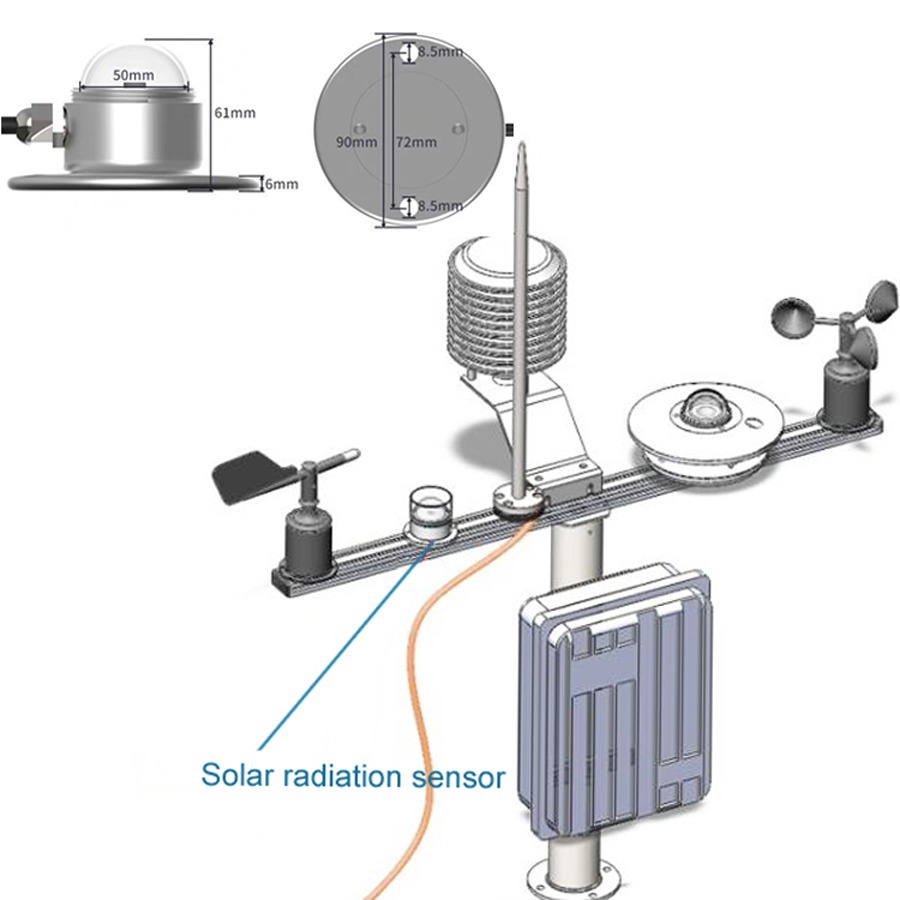Photosynthetically Active Radiation (PAR) sensor refers to the part of solar radiation that can carry out photosynthesis for vegetation in the wavelength range of 400-700 nm. The photosynthetically active radiation sensor adopts the photoelectric sensing principle and can be used to measure the photosynthetically active radiation in the spectral range of 400~700nm.
The working principle of PAR sensor
The photosynthetically active radiation sensor adopts the photoelectric sensing principle and can be used to measure the photosynthetically active radiation in the spectral range of 400~700nm. The sensor adopts high-precision photoelectric sensing elements, wide spectrum absorption, high absorption in the range of 400-700nm, and good stability; when there is light, a voltage signal proportional to the intensity of incident radiation is generated, and its sensitivity is proportional to the incident light The cosine of the direct angle is proportional.
Applications of Photosynthetically Active Radiation Sensors
Photosynthetically active radiation has a regulatory effect on plant photosynthesis, growth and development, morphogenesis, and plant metabolism. Different wavelengths of light irradiated on plants have different effects on plant physiology, so different wavelengths of light have different weights involved in photosynthesis. , and varies with plant species and growth stages. The photosynthetically active radiation data measured by the photosynthetically active radiation sensor is of great significance to the research of plant growth, plant photosynthesis and vegetation index.

※Note: As one of the earliest sensor manufacturer, SenTec provide a wide variety flow environmental measurement solutions, such as T&H sensor, soil sensor, wind speed sensor, solar radiation sensor, light sensor, rain & snow sensor, water quality sensor, all in one weather station etc.
For specific light and radiation sensor transmitter price, please contact our sales engineer.




